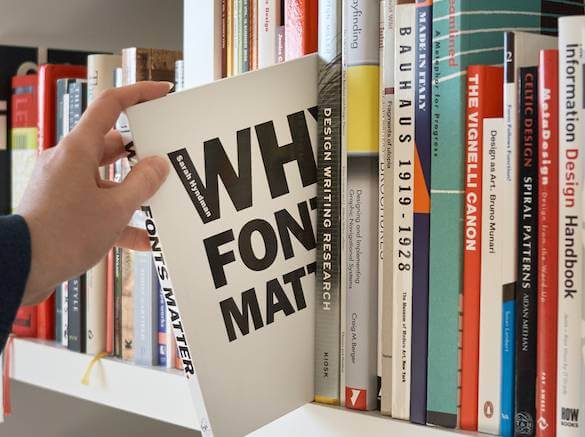
Why fonts really do matter
Friday 29 April 2016
An excellent book by Sarah Hyndman looking at some of the powerful ways in which fonts can influence us and affect our perception of the world around us.

Friday 29 April 2016
An excellent book by Sarah Hyndman looking at some of the powerful ways in which fonts can influence us and affect our perception of the world around us.
Why Fonts Matter by Sarah Hyndman is an excellent book looking at some of the powerful ways in which fonts can influence us and affect our perception of the world around us. It’s written in everyday vocabulary, and related to a wide range of practical everyday situations, but is backed up by research from a broad range of psychologists and neuroscientists as well as Hyndman’s own Type Tasting workshops.
Central to the book is the idea that fonts can add an additional layer of meaning to your message beyond what the words themselves actually say. We are all familiar with the idea that tone of voice, facial expressions, body language, and the way we dress communicate a lot of information about us when we meet someone. Hyndman likens this to fonts stating:
Fonts convey non-verbal information in a similar way to clothes. Your choice of font tells the world how serious you are, and it clues the reader in to your emotions or your intentions before they have started to read. Just like noticing when somebody is dressed inappropriately or their words do not match their body language – if you use a mismatching font you may find your credibility is called into question.
And she gives a wonderful example of how this can mismatch can become the unintended focus of your message. When CERN made the historic announcement that they had discovered the Higgs boson in 2012 social media lit up. But it wasn’t because the scientific community had finally found this mysterious particle. No. It was because the announcement had been made in Comic Sans! The choice of font was mismatched with the message, and the Twittersphere took note – overshadowing the intended message in the process.*
Your choice of font can impact on the overall message you communicate in many ways. Hyndman demonstrates that, incredibly, the font you choose for your product’s packaging can actually change your consumer’s experience of its taste. Hyndman leaves us with a question:
Could we add sugar, salt and fat to food via the packaging, like a placebo, and reduce the amounts in the actual food, but do this so that our perception of what the food actually tastes like is unaltered?
Research on this is underway!
Some of the research Hyndman calls upon shows us how your choice of font can earn a customer’s trust, make them more likely to purchase your product, make your message more believable, emphasise the skill required to make your product, or make an action look easy to complete. It’s very easy to see how this knowledge could be applied to marketing a product or service.
The accessible way that this book is written makes it easy and enjoyable to read. So if you are interested in how a simple change in typeface might improve the effectiveness of your marketing materials then this book is definitely worth a look.
* By 1 April 2014 CERN had recovered sufficiently to publish this excellent April Fool’s gag on the topic.
Recent posts
Featured posts

Hello! I’m Sarah, an independent typographic designer, helping businesses to communicate their unique selling points through printed marketing and communications.
I’ve been sharing my knowledge about design, typography, marketing, branding and printing since 2014. I hope you enjoy reading my blog.

Sarah Cowan